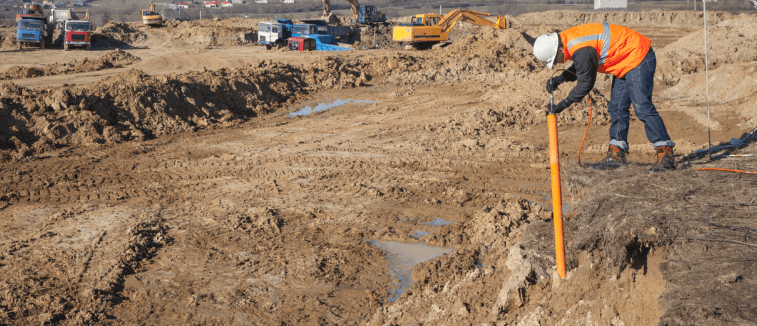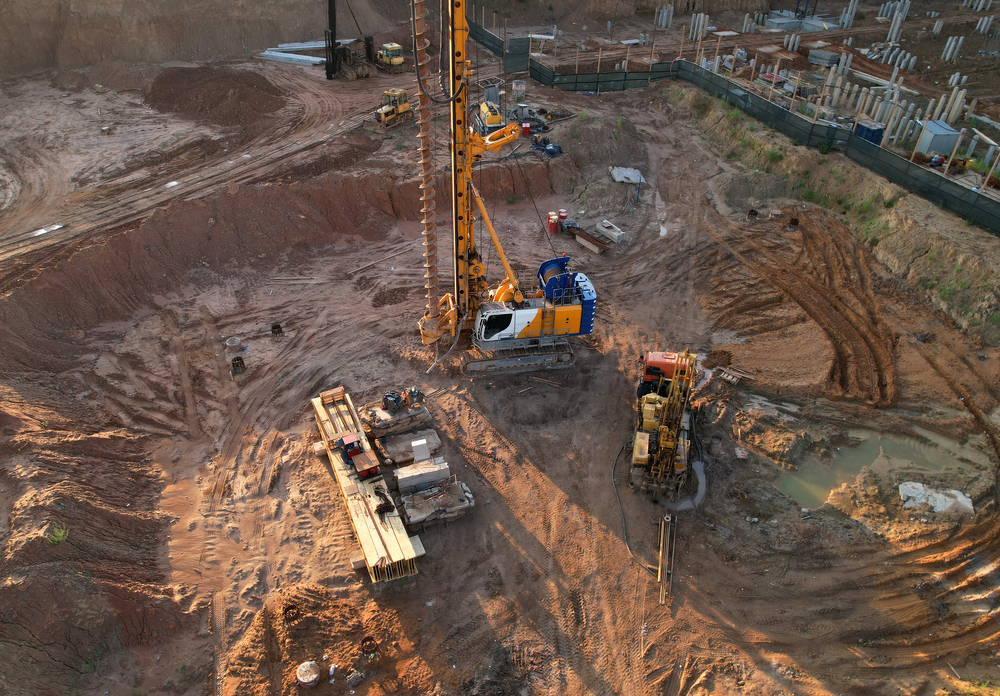The Facts About Geotheta Revealed
The Facts About Geotheta Revealed
Blog Article
An Unbiased View of Geotheta
Table of ContentsSome Known Questions About Geotheta.Geotheta for DummiesThings about GeothetaSome Of GeothetaGetting My Geotheta To Work

They carry out site investigations, gather samples, execute laboratory tests, and evaluate information to assess the viability of the ground for building and construction projects - Geotechnical Engineers. Based upon their findings, geotechnical engineers give suggestions for foundation design, incline stability, maintaining structures, and reduction of geotechnical risks. They collaborate with various other specialists, such as designers, structural designers, and construction teams, to guarantee that geotechnical factors to consider are incorporated into the overall project layout and implementation
By analyzing the behavior and homes of soil and rock, they can determine possible geotechnical threats such as landslides, dirt settlement, or incline instability. Their knowledge aids protect against failings or crashes that can endanger lives and residential property. Here are some in-depth tasks and duties of a geotechnical designer: Website Investigation: Geotechnical designers conduct site examinations to collect information on subsurface problems.
They analyze the data to understand the residential or commercial properties and habits of the soil and rock, including their strength, leaks in the structure, compaction features, and groundwater conditions. Geotechnical Evaluation and Design: Geotechnical designers assess the data accumulated during site investigations to assess the stability and viability of the website for construction projects. They execute geotechnical computations and modeling to review variables such as bearing ability, negotiation, slope security, side earth stress, and groundwater circulation.
Geotheta Things To Know Before You Buy
Structure Layout: Geotechnical engineers play a crucial function in creating structures that can securely sustain the desired framework. They analyze the dirt conditions and tons demands to identify the suitable structure type, such as shallow structures (e.g., grounds), deep structures (e.g (http://go.bubbl.us/e3adfd/a28b?/Geotheta)., stacks), or specialized strategies like soil renovation. They take into consideration variables such as settlement limits, birthing capacity, and soil-structure interaction to establish optimum structure designs
They evaluate building and construction plans, monitor website activities, and conduct area evaluations to validate that the layout referrals are adhered to. If unexpected geotechnical concerns develop, they analyze the situation and provide suggestions for remediation or modifications to the style. Danger Assessment and Mitigation: Geotechnical engineers assess geotechnical hazards and dangers related to the project website, such as landslides, liquefaction, or soil disintegration.

Collaboration and Interaction: Geotechnical engineers work carefully with other experts entailed in a project, such as engineers, structural engineers, and building groups. Reliable communication and cooperation are necessary to integrate geotechnical considerations into the general project layout and building and construction procedure. Geotechnical engineers supply technological experience, solution questions, and guarantee that geotechnical needs are satisfied.
The smart Trick of Geotheta That Nobody is Talking About
Here are some sorts of geotechnical engineers: Structure Designer: Foundation engineers concentrate on making and evaluating structures for structures. They assess the dirt problems, load demands, and site attributes to determine the most proper structure kind and layout, such as shallow foundations, deep structures, or specialized strategies like pile foundations.
They examine the elements influencing incline stability, such as soil residential properties, groundwater conditions, and incline geometry, and establish strategies to avoid incline failings and reduce threats. Quake Designer: Earthquake designers specialize in evaluating and making frameworks to hold up against seismic pressures. They analyze the seismic danger of a site, examine soil liquefaction capacity, and establish seismic layout requirements to guarantee the safety and strength of frameworks during earthquakes.
They do area screening, collect examples, and examine the accumulated information to characterize the soil residential or commercial properties, geologic formations, and groundwater problems at a website. Geotechnical Instrumentation Designer: Geotechnical instrumentation designers concentrate on monitoring and gauging the behavior of soil, rock, and frameworks. They set up and preserve instrumentation systems that monitor variables such as dirt settlement, groundwater degrees, incline movements, and structural variations to analyze efficiency and provide early cautions of potential issues.
4 Simple Techniques For Geotheta
They conduct examinations such as triaxial tests, loan consolidation examinations, straight shear examinations, and leaks in the structure examinations to gather information for geotechnical analysis and design. Geosynthetics Designer: Geosynthetics designers specialize in the style and application of geosynthetic products, such as geotextiles, geogrids, and geomembranes. They make use of these materials read this to boost dirt stability, reinforce inclines, offer drain solutions, and control erosion.
They tend to be investigatory individuals, which indicates they're intellectual, introspective, and analytical. They are interested, systematic, rational, logical, and sensible. Some of them are likewise social, suggesting they're kind, generous, participating, patient, caring, handy, compassionate, sensible, and pleasant - Consulting Engineers.
In the workplace environment, geotechnical engineers make use of specialized software application tools to do computations, develop styles, and evaluate information. They prepare reports, testimonial project specs, communicate with customers and group members, and coordinate project tasks. The workplace setting offers a conducive atmosphere for research, analysis, and cooperation with other experts associated with the job.
Some Known Incorrect Statements About Geotheta
They often check out job websites to perform website investigations, assess geotechnical conditions, and gather information for evaluation. These gos to involve taking a trip to various locations, often in remote or difficult terrains. Geotechnical designers may perform soil sampling, conduct examinations, and screen building tasks to ensure that the geotechnical aspects of the job are being implemented properly.
Geotechnical designers likewise function in specialized geotechnical labs. Geotechnical laboratory designers function thoroughly in these environments, dealing with screening devices, operating instruments, and taping information.
Report this page